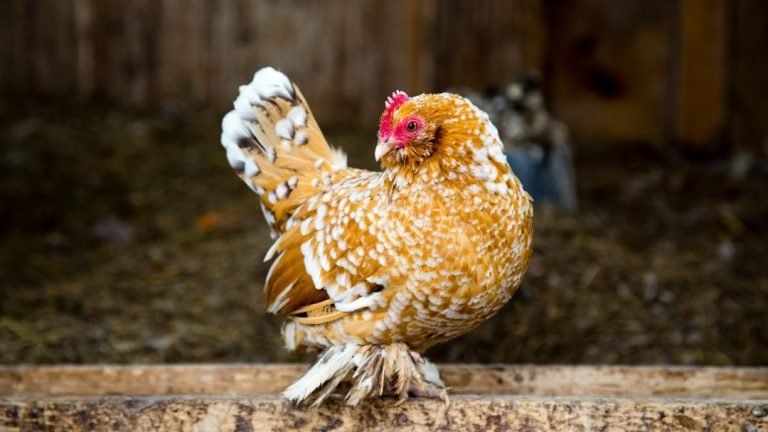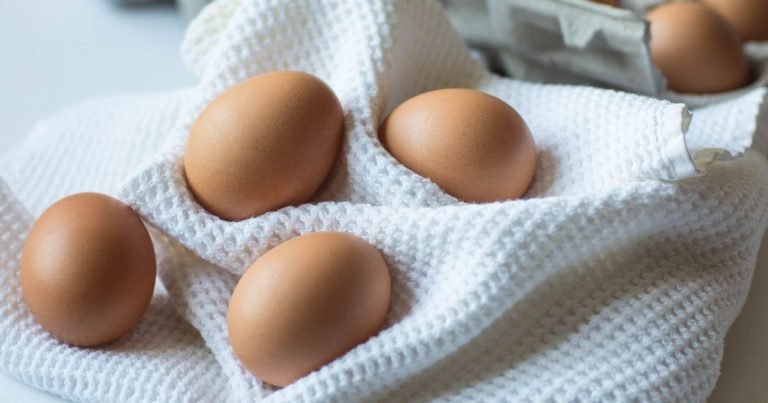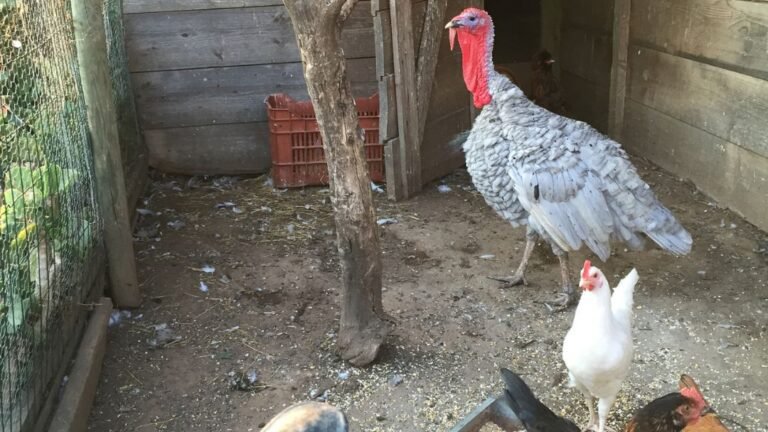Chickens need a minimum of 4 square feet of coop space per bird to ensure their comfort and well-being. Raising chickens has become increasingly popular among urban and rural dwellers alike.
Not only do chickens provide a sustainable source of fresh eggs, but they also make delightful pets with their friendly and inquisitive nature. However, it’s important to provide these feathered friends with adequate space to thrive. The amount of space chickens need depends on various factors such as breed, purpose, and personal preferences.
We will explore the ideal amount of space chickens require for their coop, taking into consideration their physical and psychological needs. By understanding and providing the appropriate amount of space, you can ensure that your chickens lead happy, healthy lives.
Why Space Matters For Chicken Comfort And Productivity
When it comes to raising chickens, providing them with adequate space is essential for their overall well-being and productivity. Chickens, like any living creatures, thrive in environments where they have enough room to roam, explore, and engage in natural behaviors. In this section, we will explore the importance of space for chicken well-being, the impact of space on chicken health and behavior, and the connection between space and egg-laying productivity.
Importance Of Space For Chicken Well-being
Space plays a crucial role in ensuring that chickens lead happy and healthy lives. While chickens are adaptable creatures, they need enough space to express their natural behaviors and maintain their physical and mental well-being. Providing ample space allows chickens to stretch their wings, dust bathe, peck at the ground, and establish a pecking order without feeling cramped or confined.
Furthermore, overcrowded environments can lead to stress and increased aggression among chickens. This can result in feather pecking, cannibalism, and other harmful behaviors. By offering sufficient space, you can create an environment that promotes peaceful coexistence and reduces the risk of injury and disease transmission among your flock.
Impact Of Space On Chicken Health And Behavior
The space available to chickens has a direct impact on their health and behavior. Inadequate space can lead to a variety of issues, such as poor air quality, increased levels of ammonia, and a higher risk of disease. Overcrowding can also limit the chickens’ ability to exercise and maintain their physical condition, making them more susceptible to obesity and related health problems.
Moreover, chickens that lack space may exhibit abnormal behaviors, such as excessive egg-eating, feather-pecking, and even reduced egg-laying. These behaviors are often indicators of stress and frustration, highlighting the importance of providing enough space for chickens to live comfortably and exhibit their natural instincts.
Connection Between Space And Egg-laying Productivity
The amount of space chickens have access to directly affects their egg-laying productivity. Chickens that are overcrowded and confined to cramped spaces are more likely to experience stress, which can lead to a decrease in egg production. This is particularly true in situations where hens are unable to access comfortable nesting areas, causing them to feel anxious and reluctant to lay their eggs.
On the other hand, when chickens are given adequate space, they can comfortably move around, find suitable nesting spots, and feel secure while laying their eggs. An optimal space environment promotes healthier and happier laying hens, resulting in increased egg production and quality.
In conclusion, providing chickens with ample space is vital for their overall well-being and productivity. By allowing them to live in a comfortable and stress-free environment, you can ensure their physical and mental health, promote natural behaviors, and maximize their egg-laying potential.
Determining The Minimum Space Requirements For Chickens
When it comes to raising chickens, providing them with adequate space is crucial for their overall health and well-being. Determining the minimum space requirements for chickens involves considering various factors such as breed, size, age, and activity level. By understanding these factors and adhering to general guidelines, you can ensure that your chickens have the space they need to thrive.
Factors To Consider When Determining Space Requirements
When deciding on the space requirements for your chickens, it’s important to take into account several factors that can influence their comfort and productivity.
- Breed and Size: Different chicken breeds and sizes have varying space needs. Larger breeds generally require more space to move around comfortably. If you have a mixed flock, consider the space requirements of the largest breed as a guideline.
- Age and Activity Level: The age and activity level of your chickens also impact their space requirements. Younger chickens and birds that are more active will benefit from having more space to exercise and explore.
General Guidelines For Different Types Of Chickens
To ensure that your chickens have sufficient space, here are some general guidelines based on breed and size:
| Breed/Size | Minimum Space per Chicken |
|---|---|
| Standard-sized Chickens | 4 square feet (0.37 square meters) per chicken |
| Bantam Chickens | 2 square feet (0.19 square meters) per chicken |
| Large Breeds | 8 square feet (0.74 square meters) per chicken |
| Small Breeds | 6 square feet (0.56 square meters) per chicken |
Remember that these guidelines are minimum requirements. Providing extra space beyond these recommendations will only benefit your chickens.
Ensuring that your chickens have enough space is essential for their overall health, happiness, and productivity. By considering the factors mentioned above and adhering to general guidelines based on breed and size, you can provide your feathered friends with the comfortable and spacious environment they deserve.
Creating A Comfortable Living Space For Chickens
When it comes to raising chickens, providing them with a comfortable living space is essential for their overall well-being and productivity. Designing a chicken coop that allows for optimal space utilization is crucial. From the dimensions of the coop and run to providing adequate area for roosting and nesting, every aspect plays a significant role in ensuring your chickens have enough space to thrive.
Designing The Chicken Coop For Optimal Space Utilization
To create a chicken coop that maximizes space utilization, thoughtful design is key. Here are a few recommendations to consider:
- Make sure the coop is large enough to accommodate the number of chickens you plan to keep. As a general rule of thumb, each standard-sized chicken needs a minimum of 4 square feet of indoor space.
- Consider using vertical space to make the most of your coop’s footprint. For example, you can install roosting bars at varying heights to give chickens enough room to perch and move around.
- Utilize hooks or hanging baskets to keep the feeders and waterers suspended from the walls or ceiling. This not only saves floor space but also prevents chickens from knocking over their food and water.
- Provide ample ventilation and natural light by incorporating windows or vents into the coop’s design. Good airflow helps maintain a healthy living environment for your chickens.
Recommendations For The Dimensions Of The Coop And Run
The dimensions of the coop and run play a critical role in providing sufficient space for chickens to roam and exercise. Consider the following recommendations:
| Coop Dimensions | Run Dimensions |
|---|---|
| Allow for at least 2-3 square feet of coop space per chicken for smaller breeds and up to 4-5 square feet for larger breeds. | Provide a minimum of 8-10 square feet of run space per chicken to allow for free-ranging and scratching. |
| Ensure the coop has a height of at least 2 feet to allow for easy cleaning and maintenance. | Consider extending the run’s dimensions if you have space, as chickens benefit from additional room to move and explore. |
Tips For Providing Adequate Area For Roosting And Nesting
Giving your chickens dedicated spaces for roosting and nesting is vital for their comfort and egg-laying habits. Here are a few tips:
- Install sturdy roosting bars or branches at least 2 feet above the coop floor. Allow approximately 8-10 inches of roosting space per chicken.
- Provide nesting boxes with comfortable bedding, such as straw or wood shavings, in a quiet and secluded area of the coop.
- Allocate one nesting box for every 3-4 chickens, ensuring each box is approximately 12×12 inches in size.
By focusing on these aspects and adhering to the proper dimensions, you can create a comfortable living space that allows your chickens to thrive and lay eggs more consistently. Remember, happy and healthy chickens lead to delicious, farm-fresh eggs!
Enhancing Chicken Productivity Through Space Maximization Strategies
Enhancing Chicken Productivity Through Space Maximization Strategies
Providing sufficient space for your chickens is crucial for their health, well-being, and overall productivity. Maximizing the utilization of space not only enhances their comfort, but it also contributes to increased egg production and healthier birds. In this article, we will explore diverse strategies to optimize space usage, including utilizing vertical space effectively, implementing rotational grazing techniques, and harnessing the benefits of free-ranging and foraging.
Utilizing Vertical Space Effectively
When it comes to maximizing space, thinking vertically can provide your chickens with ample room for movement and activity. By utilizing vertical space within their coop or run, you can create more space horizontally, complementing their natural desire to perch and roost. Vertical utilization can be accomplished through the installation of sturdy chicken ladders, platforms, and elevated perches.
These structures not only give chickens the opportunity to explore and exercise their natural instincts but also allow for efficient space management. In addition, vertical space utilization promotes healthier bones and muscles, as chickens benefit from perching at various heights. Implementing these measures can significantly increase the effective capacity of your chicken coop or run.
Implementing Rotational Grazing Techniques
Rotational grazing techniques are an effective strategy for maximizing space and promoting an abundant supply of fresh, nutrient-rich forage for your chickens. Implementing rotation by dividing your available space into separate grazing areas allows you to control the access of chickens to different sections. This method ensures that the vegetation has sufficient time to regenerate, providing a constant supply of healthy forage for your flock.
Rotational grazing not only maximizes the efficiency of space usage but also reduces the risk of overgrazing and nutrient exhaustion from the land. By implementing a rotational grazing system, you provide your chickens with a continuous source of diverse forage, promoting their overall health and productivity, as well as enriching the soil.
Harnessing The Benefits Of Free-ranging And Foraging
Allowing chickens to free-range and forage can significantly enhance their productivity and well-being. Free-ranging allows chickens to explore their environment, increasing their physical activity and mental stimulation. It also provides them with access to a wide range of plant materials, insects, and grubs, enriching their diet and ensuring a more balanced nutrient intake.
While free-ranging, chickens often scratch the soil, helping to control pests and weeds. They also contribute to the overall health of the land by spreading manure, aiding in the decomposition of organic matter, and naturally aerating the soil. To ensure the safety of your chickens, proper fencing and predator protection measures should be in place, allowing them to roam and forage safely.
By incorporating free-ranging and foraging into your space maximization strategy, you not only enhance your chickens’ productivity but also promote their physical and mental well-being. This can result in healthier birds, increased egg production, and a more sustainable system overall.
Additional Considerations For Maximizing Chicken Comfort And Productivity
Factors Beyond Space To Improve Chicken Well-being
Adequate space for chickens is crucial for their well-being and productivity. However, there are additional considerations that can further enhance the comfort and overall health of your flock. By addressing these factors, you can create an environment that promotes their happiness, reduces stress, and boosts productivity.
Importance Of Cleanliness And Ventilation
Cleanliness and proper ventilation play a pivotal role in maintaining optimal conditions for your chickens. Regularly cleaning the coop and removing droppings helps prevent the buildup of harmful bacteria and parasites, reducing the risk of diseases. Additionally, a well-ventilated coop ensures fresh air circulation, which is essential for the respiratory health of your feathered friends.
Providing Enrichment Activities And Socialization Opportunities
Just like humans, chickens benefit from mental stimulation. Providing enrichment activities not only keeps them entertained but also prevents boredom and destructive behaviors. Consider placing various items like perches, hanging toys, and straw bales in the coop to encourage natural behavior such as jumping, pecking, and scratching.
Socialization is also crucial for chickens’ well-being. They are highly social animals and thrive when they have companionship. By providing opportunities for interaction, such as free-ranging or introducing new flock members gradually, you can create a supportive social environment that promotes their natural instincts.
To summarize, maximizing chicken comfort and productivity goes beyond providing adequate space. Ensuring a clean and well-ventilated coop, as well as offering enrichment activities and socialization opportunities, can greatly improve the well-being of your feathered companions. By addressing these additional considerations, you can create a thriving environment that supports their physical and mental health.
Conclusion
Providing adequate space for chickens is essential for their overall well-being and productivity. The recommended space requirement for each chicken varies depending on factors such as breed, size, and purpose. By understanding their unique needs and providing sufficient room to roam, perch, and explore, we can ensure that our feathered friends lead happy and healthy lives.
Remember, a spacious environment not only promotes physical health but also encourages natural behaviors, resulting in happier and more productive chickens. So, whether you’re raising chickens for eggs or meat, create a space that allows them to spread their wings and flourish.





